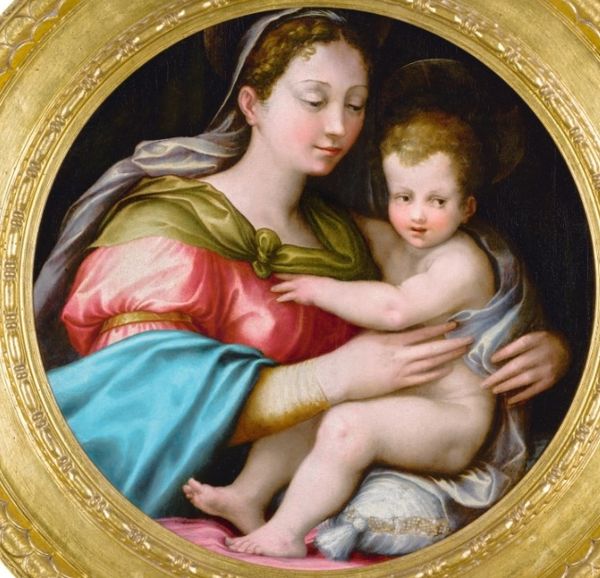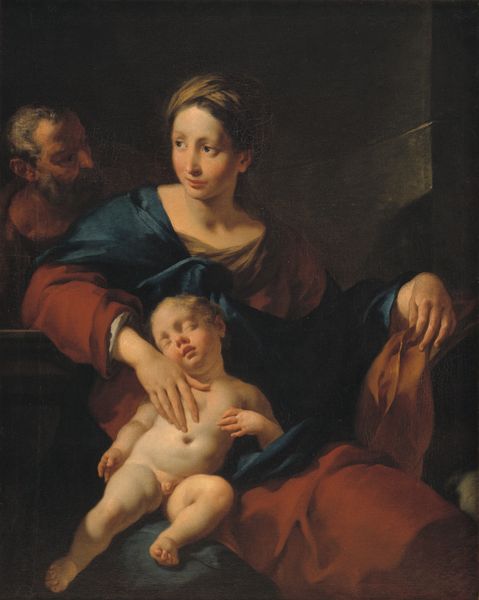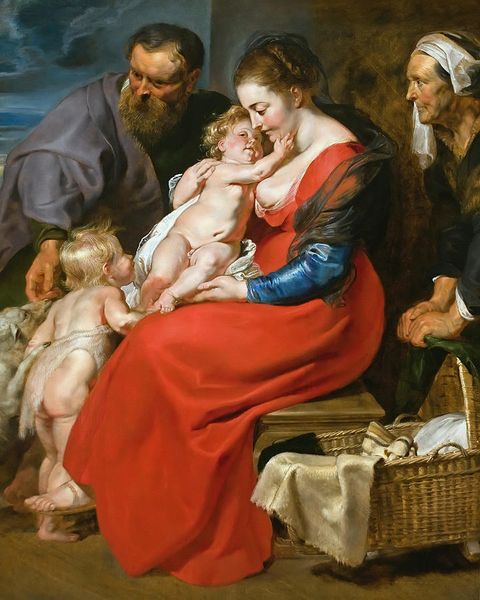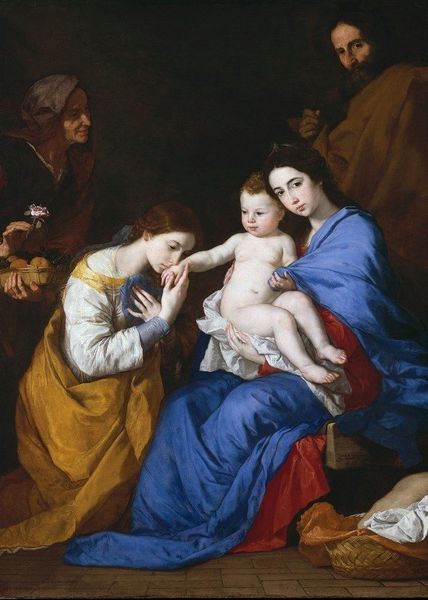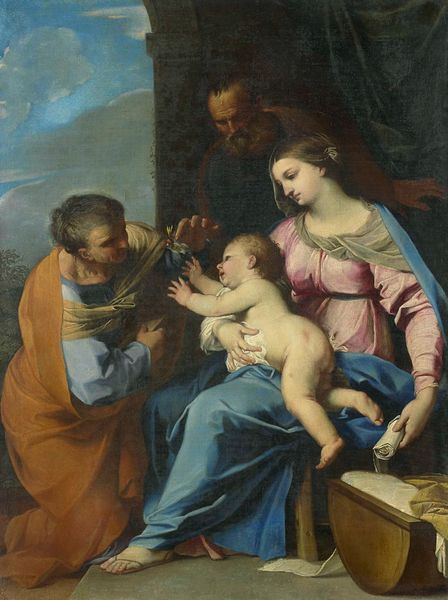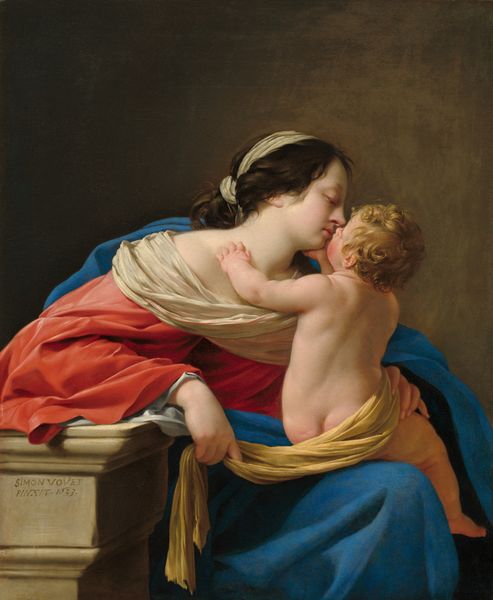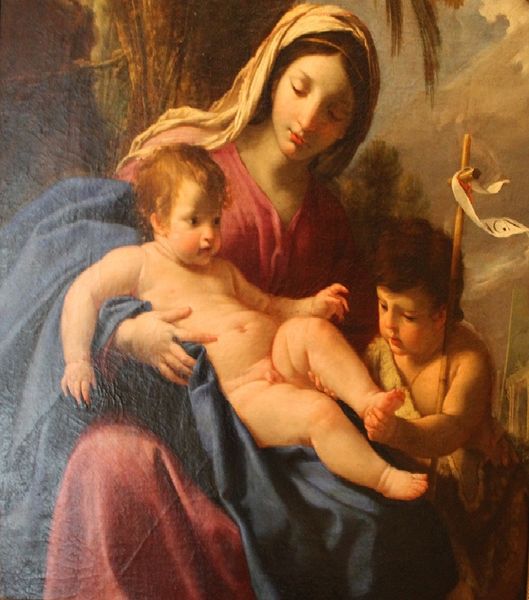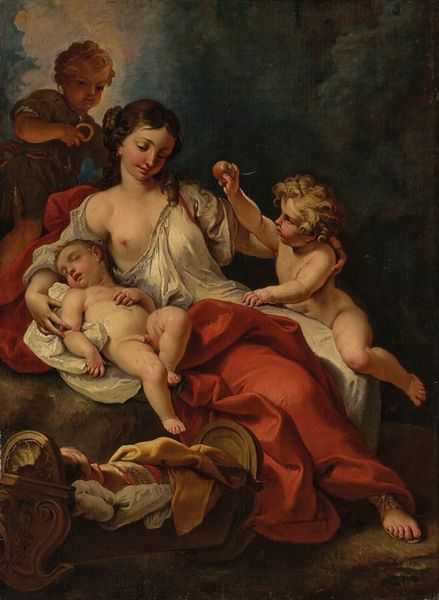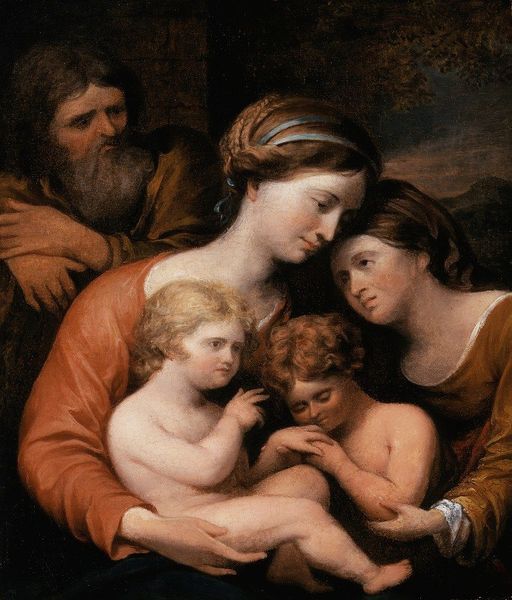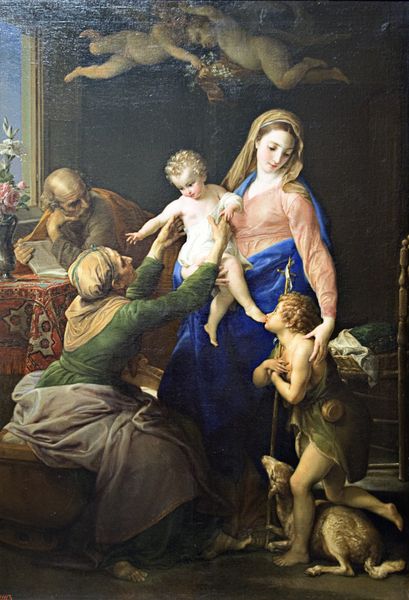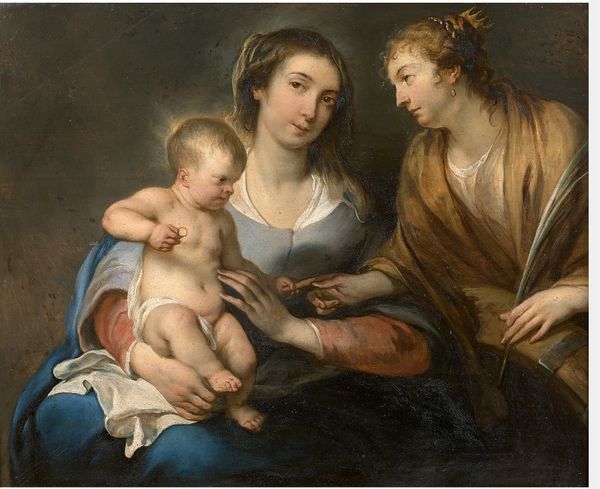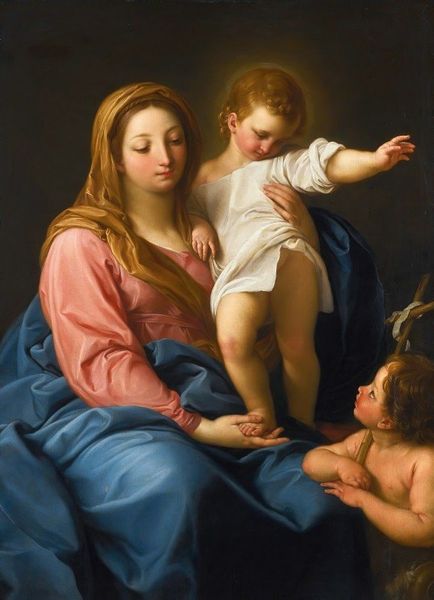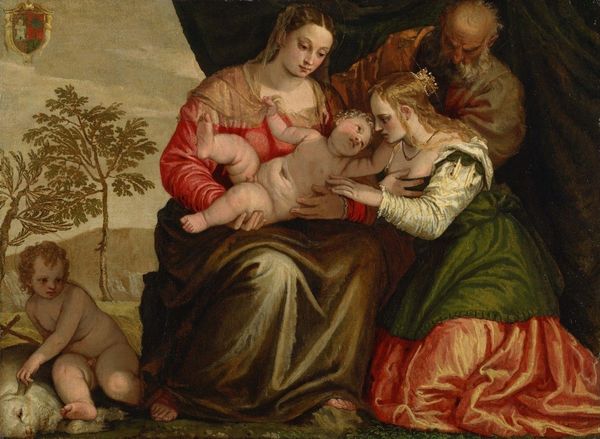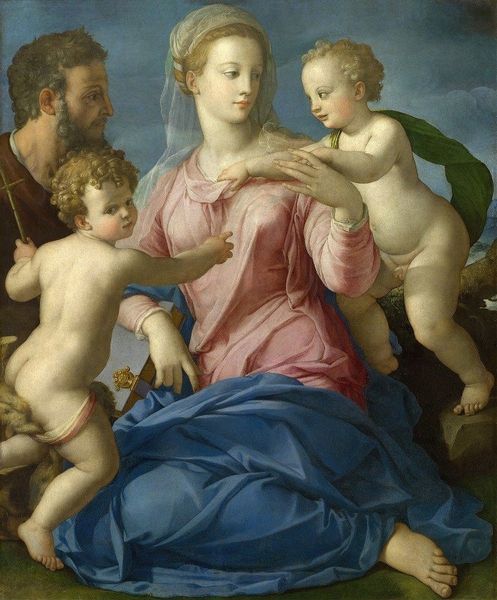
painting, oil-paint
#
portrait
#
baroque
#
painting
#
oil-paint
#
figuration
#
oil painting
#
history-painting
Copyright: Public Domain: Artvee
Editor: We’re looking at Guido Reni's "Virgin and Child with Saint John the Baptist," created around 1640 to 1642. The soft colors create this almost dreamlike feeling, even though the subject is very traditional. How do you interpret this work, considering its historical context? Curator: It's vital to recognize how Counter-Reformation ideals influenced artists like Reni. Consider the rise of prominent artistic academies and their patronage; images such as this reaffirmed Catholic doctrine during a time of intense religious conflict, emphasizing piety, motherhood, and divine blessing, all of which catered to the establishment, seeking art for diplomatic ends, with beauty as their means for expressing power. Editor: So, you’re saying this painting wasn’t just a personal expression but part of a broader effort to project religious authority? Curator: Precisely. Reflect on where this painting would have been displayed and how the average person may have viewed it. How does that influence your appreciation? Editor: That definitely gives me a different perspective. Thinking about it as propaganda—I mean, *affirming doctrine* makes the sweetness of the figures almost… calculated? Curator: It speaks volumes about the intertwined relationship between art and power during this period. Are there other aspects you noticed within the artwork that you wonder how those relational circumstances impacted the visual components? Editor: Looking closely, I’m wondering why they placed a shepherd and flock, far behind in an upper window. That background really makes me curious about the role it plays. Curator: Notice how the artist has organized that particular section to encourage thought. I hope this helped provide you a small fraction of the full context for this painting. What’s your key take away? Editor: I realize how essential understanding social history is to interpreting even seemingly straightforward religious art. Thank you! Curator: Absolutely, by viewing it through a social and political lens we get more than just surface appearances. I, in turn, learned the necessity of accounting for first impressions.
Comments
No comments
Be the first to comment and join the conversation on the ultimate creative platform.
